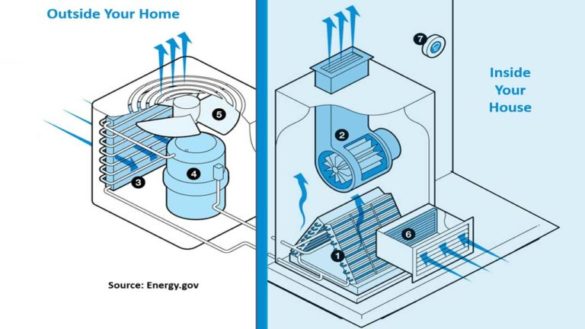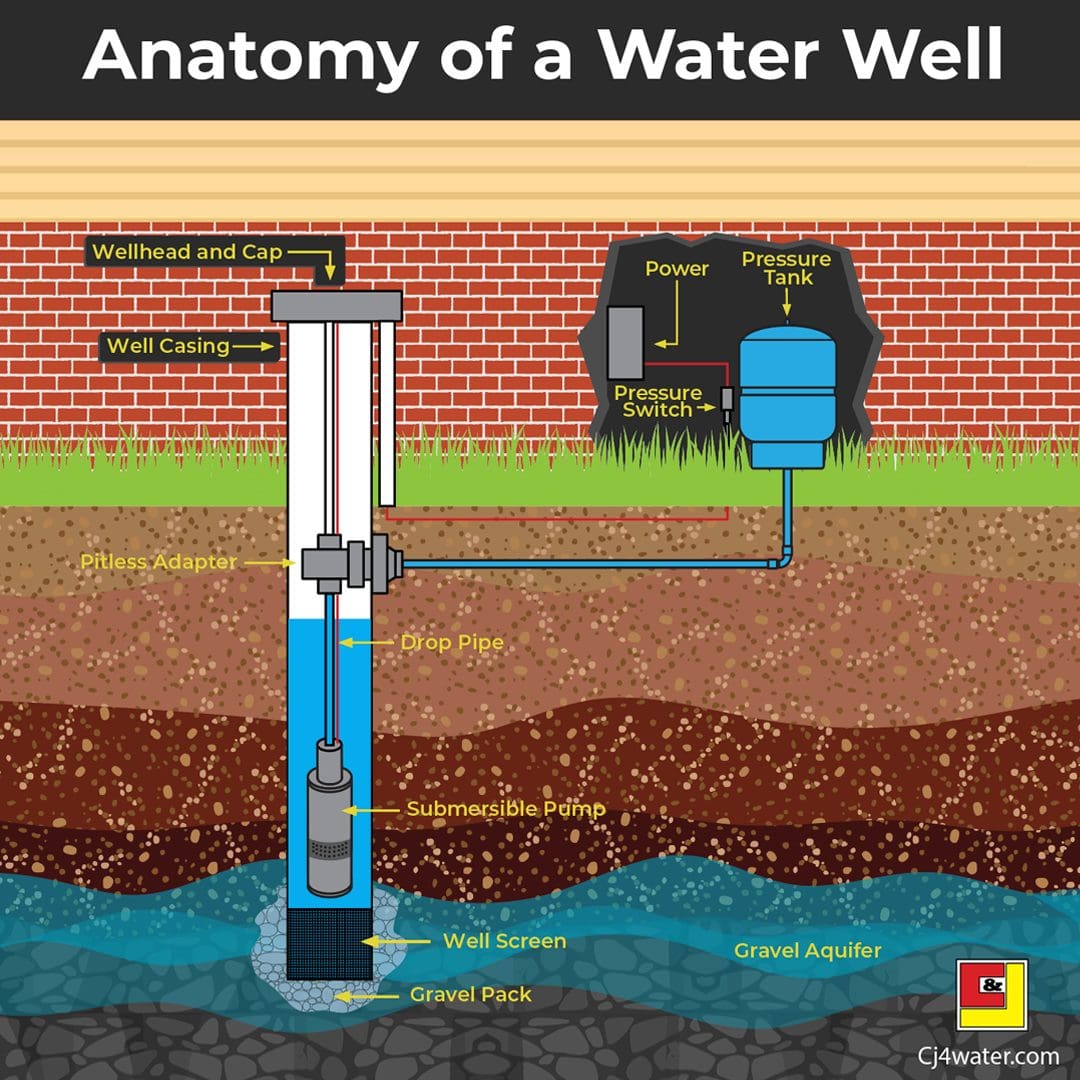The Main Elements of Your Home's Plumbing System
The Main Elements of Your Home's Plumbing System
Blog Article
We have come across this great article pertaining to The Inner Workings of Your Home's Plumbing below on the internet and decided it made sense to relate it with you on this site.

Recognizing how your home's plumbing system functions is crucial for each home owner. From supplying clean water for drinking, cooking, and bathing to safely removing wastewater, a well-maintained plumbing system is important for your family's health and wellness and comfort. In this extensive overview, we'll discover the intricate network that makes up your home's pipes and deal pointers on upkeep, upgrades, and managing usual problems.
Introduction
Your home's pipes system is greater than just a network of pipes; it's a complex system that ensures you have access to tidy water and effective wastewater removal. Knowing its components and just how they interact can aid you stop costly repair work and guarantee every little thing runs smoothly.
Basic Elements of a Pipes System
Pipelines and Tubes
At the heart of your pipes system are the pipelines and tubes that bring water throughout your home. These can be made from various products such as copper, PVC, or PEX, each with its advantages in terms of resilience and cost-effectiveness.
Components: Sinks, Toilets, Showers, and so on.
Components like sinks, commodes, showers, and tubs are where water is utilized in your home. Understanding how these components attach to the pipes system helps in detecting issues and planning upgrades.
Shutoffs and Shut-off Points
Valves regulate the circulation of water in your pipes system. Shut-off shutoffs are essential during emergency situations or when you require to make repairs, enabling you to separate parts of the system without interrupting water flow to the whole home.
Supply Of Water System
Main Water Line
The major water line connects your home to the local supply of water or a private well. It's where water enters your home and is dispersed to different fixtures.
Water Meter and Pressure Regulatory Authority
The water meter procedures your water use, while a stress regulatory authority ensures that water streams at a safe stress throughout your home's plumbing system, preventing damages to pipelines and components.
Cold Water vs. Hot Water Lines
Recognizing the distinction in between cold water lines, which supply water straight from the major, and hot water lines, which carry warmed water from the hot water heater, helps in repairing and planning for upgrades.
Drain System
Drain Pipes Pipes and Traps
Drain pipelines lug wastewater far from sinks, showers, and bathrooms to the sewage system or sewage-disposal tank. Catches prevent drain gases from entering your home and also catch debris that can trigger obstructions.
Air flow Pipes
Air flow pipes enable air right into the drainage system, stopping suction that could slow down drain and trigger catches to empty. Correct ventilation is important for keeping the honesty of your plumbing system.
Relevance of Correct Drain
Making sure correct drainage avoids back-ups and water damages. Routinely cleansing drains and preserving catches can stop expensive repair services and extend the life of your plumbing system.
Water Heater
Sorts Of Water Heaters
Water heaters can be tankless or standard tank-style. Tankless heating systems heat water as needed, while containers save heated water for immediate usage.
Upgrading Your Plumbing System
Factors for Updating
Updating to water-efficient fixtures or changing old pipelines can improve water high quality, minimize water bills, and boost the worth of your home.
Modern Pipes Technologies and Their Benefits
Explore technologies like wise leakage detectors, water-saving bathrooms, and energy-efficient hot water heater that can conserve cash and minimize ecological influence.
Price Considerations and ROI
Calculate the upfront expenses versus long-lasting cost savings when taking into consideration pipes upgrades. Lots of upgrades spend for themselves via lowered utility bills and fewer repair services.
Just How Water Heaters Connect to the Plumbing System
Understanding how water heaters link to both the cold water supply and hot water distribution lines helps in diagnosing concerns like insufficient warm water or leakages.
Maintenance Tips for Water Heaters
Routinely purging your hot water heater to get rid of debris, inspecting the temperature level setups, and checking for leaks can extend its life-span and boost power performance.
Usual Pipes Concerns
Leakages and Their Reasons
Leakages can take place as a result of maturing pipelines, loose fittings, or high water pressure. Resolving leakages immediately avoids water damage and mold and mildew development.
Blockages and Obstructions
Obstructions in drains and commodes are often caused by purging non-flushable products or an accumulation of oil and hair. Making use of drainpipe displays and being mindful of what goes down your drains pipes can protect against clogs.
Signs of Plumbing Problems to Expect
Low water stress, slow-moving drains pipes, foul odors, or abnormally high water expenses are indicators of possible plumbing troubles that need to be attended to quickly.
Pipes Maintenance Tips
Normal Examinations and Checks
Schedule yearly pipes evaluations to capture issues early. Seek signs of leakages, rust, or mineral buildup in taps and showerheads.
DIY Upkeep Tasks
Easy jobs like cleaning tap aerators, looking for toilet leakages utilizing dye tablet computers, or insulating revealed pipes in chilly environments can avoid significant plumbing concerns.
When to Call an Expert Plumber
Know when a pipes concern needs specialist competence. Attempting complicated repairs without correct expertise can result in more damages and higher fixing costs.
Tips for Minimizing Water Usage
Basic behaviors like repairing leakages without delay, taking shorter showers, and running complete loads of laundry and recipes can preserve water and lower your energy bills.
Eco-Friendly Pipes Options
Take into consideration sustainable pipes products like bamboo for flooring, which is durable and green, or recycled glass for countertops.
Emergency Preparedness
Actions to Take During a Pipes Emergency situation
Know where your shut-off valves lie and just how to shut off the water in case of a burst pipe or significant leakage.
Relevance of Having Emergency Situation Contacts Useful
Maintain call information for regional plumbings or emergency situation solutions readily available for fast response during a pipes situation.
Environmental Impact and Conservation
Water-Saving Components and Devices
Installing low-flow taps, showerheads, and toilets can considerably minimize water use without sacrificing performance.
DIY Emergency Situation Fixes (When Relevant).
Momentary solutions like making use of air duct tape to patch a leaking pipe or placing a pail under a dripping tap can decrease damage until an expert plumbing technician shows up.
Verdict.
Comprehending the composition of your home's pipes system encourages you to keep it properly, conserving money and time on fixings. By adhering to normal upkeep regimens and staying informed regarding contemporary plumbing technologies, you can guarantee your pipes system runs successfully for several years to find.
HOW YOUR PLUMBING SYSTEM WORKS
Which Pipes Do What?
Blue lines = fresh water supply entering the building Red lines = hot water supply entering the building Grey lines = pipes carrying waste away from the building and venting pipes carrying gases away from the building (through the roof) YOUR MAIN PLUMBING SYSTEMS
There are two main plumbing systems that support your home s basic plumbing needs one that brings clean water into your home, and one that sends dirty water away from your home. Connected to the toilet, bath, shower, and other faucets in your home, these two systems keep your water flowing in the right directions.
ACCESSING FRESH WATER
Fresh and clean water is brought into your home through the main water supply line . Filtered through one pipe, this water is pressured to flow into the various fixtures in your home at any given time.
This water can be sourced from a well located on your property, a pond or river (mostly cottages), or, as in most cases, from the city s municipal water treatment centre. However, it is important to note that water that is untreated, such as the water siphoned from ponds or rivers, may not be safe to drink. Personal water supplies always need to be treated for hardness and contaminants before consumed.
MUNICIPAL WATER SUPPLIES
Improve taste and odour Remove sediment Eliminate hardness Reduce chlorine COLD WATER SUPPLY VS. HOT WATER SUPPLY
Cold water flows into your home or building through the service line, which then distributes hot or cold water to your fixtures. This line is most commonly run through a central column that runs floor to floor. Hot water runs in short and straight pipes as the longer the pipeline, the more heat that will be lost in the transfer. Having shorter pipes also allows residents to access hot water more quickly.
WASTE WATER SYSTEM
Your wastewater system is divided into two parts pipes that send wastewater away from your home and venting pipes that send sewer gas away from your home. Sewage water travels through pipes that flush the water and waste towards local sewers that are operated and managed by your city or town. Most sewer systems rely on gravity to move the wastewater to where it needs to go.
The further away from your toilet or sink, the larger wastewater pipes become. This allows for waste to be disposed of from various parts of your home or business at once without pipe blockages. The angle and flow of these pipes are also essential for keeping your waste pipes clear of build up.
https://harrisplumbing.ca/how-your-home-plumbing-system-works/

We were shown that write-up on Understanding Your Home's Plumbing Anatomy through a friend on our other blog. Kindly take the time to distribute this content if you enjoyed reading it. Thanks for going through it.
Request Estimate Report this page